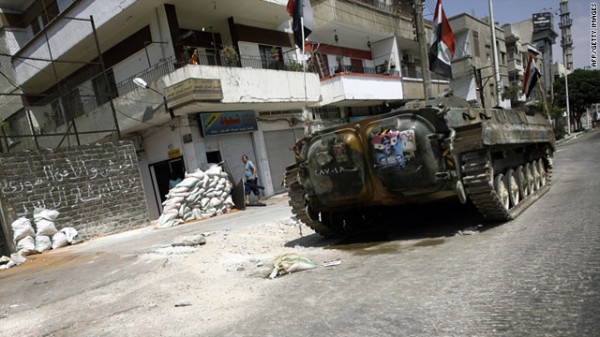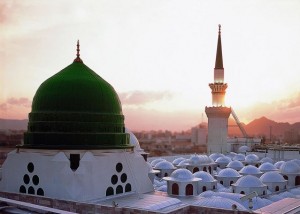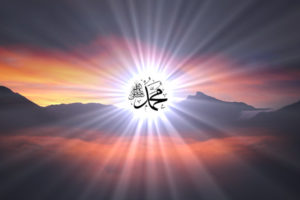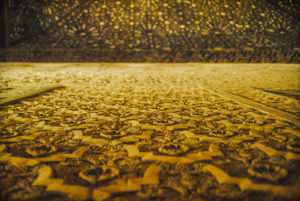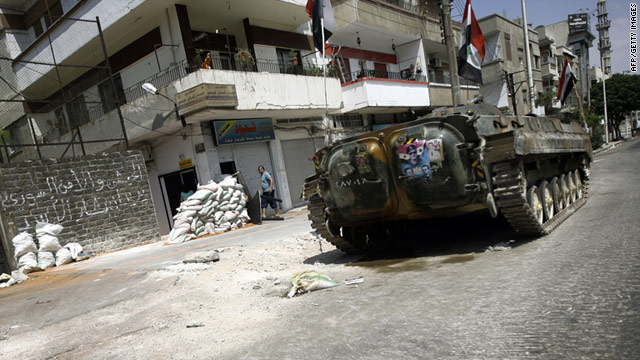
“You’ll never get there,” Syrians living outside the country said to me when I told them I was on my way to the city of Homs. “It’s circled by tanks on the outside and there’s an army checkpoint on every street corner inside the city.”
Homs was one of the first cities to join the Syrian anti-government uprising when in March thousands gathered in the main square to call for the lifting of the government’s emergency laws and a genuine democracy.
Since then it has been besieged by President Bashar al-Assad’s armed forces and seen almost daily attacks.
The city has earned the unofficial title of the “Capital of the Syrian Revolution” but at a heavy price – almost half of the killings of civilians since the uprising began, estimated to be at least 3,000, have happened there.
Bravery and cunning
I will not describe precisely how I got in to Homs – but I will say that it was entirely due to an incredibly resourceful, brave and cunning network set up by young Syrian activists who want their story told to the outside world.
They have access to a seemingly endless supply of cars, which are swapped regularly, and an ability to confront the frequent army and police checkpoints as if they are just a minor irritation.
Once when we were flagged down by an army patrol on the road into the city and everyone was ordered out of the car and searched, I was told to assume the foetal position in the back of the car, to clutch my stomach and handed a paper bag in to which to pretend to throw up.
“Officer, you can’t seriously expect my Mum to get out of the car?” one of my companions pleaded, “Look at the state she’s in!”
The soldier waved us on.
I was equipped with a hijab, a fake local ID and anyone who stopped us was told I was my driver’s deaf, mute sister. It worked every time.
Schools closed
I was taken on a tour of Bab Amer, one of the most the besieged parts of the city, driving past a bombed out shopping centre.
The army has been attacking for weeks now my guide said, and most people do not dare leave their houses:
“The school has been attacked and is now closed, they do not want our children to learn, they want us to be stupid.
“There’s no electricity, water or communications. Look how they look after us – the rubbish in the street. There are more rats than food.”
With the city under siege most protests are now staged at night to minimise the chances of casualties.
Under darkness I was driven into the centre of Homs and told to get out of the car and start filming a demonstration.
“Don’t the army shoot at demonstrations?” I asked.
“Not yet,” I was told. “We’ve blocked the roads into this area with skips and burned out cars. It’ll take them time to break their way through.”
Hardening of views
Fireworks were shooting into the sky, people dancing to the sound of drum beats.
“I haven’t seen anything like this in my 60 years – the old, the young, women, everyone calling for freedom,” Hussein, a member of the Homs Local Co-ordination Committee, said. “The government has spent millions on education according to the politics of the Baath party but, look, it hasn’t worked. It’s been a complete waste of time. The revolution will win.”
As leaders shouted out the names of each atrocity and massacre carried out by the Assad regime, the crowd responded by calling for the death of the president – by hanging.
When the demonstrations began in March the protestors called for reform, when those protests were met with bullets they began calling for the fall of the Assad regime. Today, after thousands of dead and many thousands more arrests, they call for Mr Assad’s death.
“Too many have died,” said Hussein, “we must carry on”.
Running from gunfire
Suddenly shots were heard from the end of the street. Hussein grabbed my arm and told me to run. “Quick, they are coming. They’ll be looking for your camera,” he said.
Sure enough when we knocked on the door of the first apartment we got to we were pulled inside.
Members of the family who lived there and dozens of their relatives milled around us – uncles, mothers-in-law and cousins from other parts of the city were all taking refuge there, some of them had been there for days.
“They park their tanks at the end of streets and we can’t leave or get into our homes,” they explained.
Makeshift hospitals
On Fridays the protests still take place after midday prayers, the demonstrators attempt to block off roads and, in a network of makeshift hospitals, doctors who would be arrested and tortured if they were caught treating protesters, prepare for the inevitable casualties.
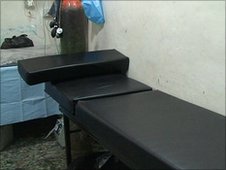
“At the beginning, we transported the injured with gunshot wounds to the hospitals. To our astonishment, we found that the injured were either arrested or killed,” one of the medics said.
“A man would go in to the hospital with a treatable injury to his hand or to his leg and his family would be summoned to collect a corpse with a shot in the head or the chest.”
But the medical points, which operate under a constant threat of attack and have to move every week to escape detection, are hopelessly inadequate and desperately short of basic supplies such as blood bags, antibiotics, even antiseptic wipes.
“About half the casualties suffer from head or chest wounds and we’re unable to treat them. No one brought to us with a head wound has survived,” the doctor added.
Security forces
That day, at the Friday protest, always the bloodiest, his worst fears were proven. Security forces shot at men as they tried to leave a mosque to join the demonstration and two received head injuries which the makeshift field hospitals could not cope with.
The best those with serious injuries can hope for is to be smuggled across the border to Lebanon for treatment.
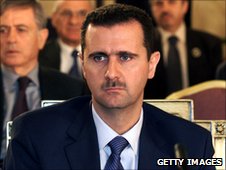
The two men who could not be saved were buried the next day – a day in which another 13 were killed in the city.
Protests are taking place in Homs daily and around the country every week, even in the suburbs of the capital, Damascus. However, despite the deaths and tens of thousands of arrests, little has been achieved.
The protests are met with what locals in Homs call the “killing machine”, the Syrian army. But it is in the army that the first cracks in the regime’s armour are beginning to show.
Soldiers I met in Syria and in neighbouring Lebanon told me how the order to shoot on their own people has been too much. Troops are now sent out on their killing missions with members of military security escorting them, the Syrian equivalent of the notorious Soviet NKVD.
“Some soldiers refuse to fire. I know this because members of military security get into the tanks and the troop carriers with the soldiers”, Mohammed, a former officer, said.
“I saw a soldier drop his weapon and join the protest and they shot him. I saw this happen to a number of soldiers. It was a major in the military security who shot them and when I asked him why he said that we have to shoot at the demonstrators because they are armed groups and they are killing us. But I haven’t seen any shooting from the protestors.”
The Syrian authorities have claimed all along that they are fighting armed criminal gangs and militant Islamists.
Alternative army
Mohammed believes that 85,000 soldiers have deserted and are now trying to form “the New Syrian Army”.
But Amer, another army defector whom I met in Lebanon, warned that “there are just not enough of us to make a difference”.
“We need arms. We need the international community to intervene and to order a no fly zone over part of the country so that we can mobilise and go in to action. Above all, we need weapons.”
In Syria, protest organisers insist that they will try to keep their demonstrations peaceful – though some reports have said that there was an armed element to the opposition to the regime from early on in the protests. They say they will also encourage support for the Free Syrian Army.
“We have a right to defend ourselves if necessary,” Muneer, a member of the Revolutionary Council of Homs, said.
“We know the government is trying to drive us in to civil war. But we Syrians – Alawis, Sunnis, Christians – are all one Syrian people and we all want an end to the rule of Bashar al-Assad.”
